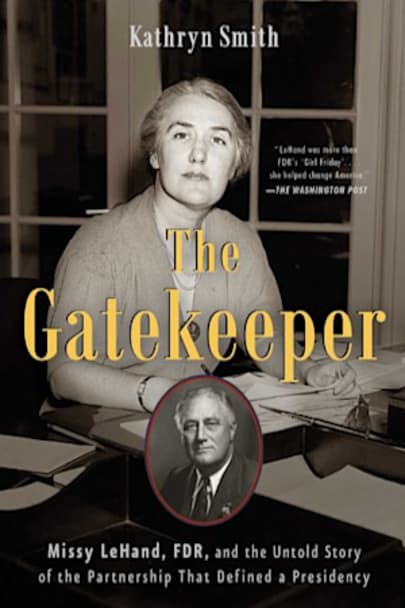The “fine biography” and “compelling personal story” (The Wall Street Journal) of arguably the most influential member of Franklin Delano Roosevelt’s administration, Marguerite “Missy” LeHand, FDR’s de facto chief of staff, who has been misrepresented, mischaracterized, and overlooked throughout history…until now. Widely considered the first–and only–female presidential chief of staff, … chief of staff, Marguerite “Missy” LeHand was the right-hand woman to Franklin Delano Roosevelt–both personally and professionally–for more than twenty years. Although her official title as personal secretary was relatively humble, her power and influence were unparalleled. Everyone in the White House knew one truth: If you wanted access to Franklin, you had to get through Missy. She was one of his most trusted advisors, affording her a unique perspective on the president that no one else could claim, and she was deeply admired and respected by Eleanor Roosevelt.
With unprecedented access to Missy’s family and original source materials, journalist Kathryn Smith tells the “fascinating” (Publishers Weekly) and forgotten story of the intelligent, loyal, and clever woman who had a front-row seat to history in the making. The Gatekeeper is a thoughtful, revealing unsung-hero story about a woman ahead of her time, the true weight of her responsibility, and the tumultuous era in which she lived–and a long overdue tribute to one of the most important female figures in American history.more



Secretary Hillary Clinton was not the first female secretary to hold a powerful position in a presidential administration.
As Kathryn Smith reveals in her book, [book:The Gatekeeper: Missy LeHand, FDR, and the Untold Story of the Partnership That Defined a Presidency, another secretary played a strong but hidden hand in the Oval Office. Marguerite LeHand, personal secretary to Franklin D. Roosevelt for nearly twenty years, served as his confidant, communicator, adviser, companion and hostess, both in Washington and at FDR’s Little White House in Warm Springs, GA. The only place she did not play a prominent role was in Hyde Park, where Sara Roosevelt, FDR’s mother, seems to have distrusted her and perhaps feared her closeness to Franklin. To “Missy” (the Roosevelt children’s name for her), FDR was FD, a name that no one else used.
LeHand came from a family of working-class Boston Catholic parents. A trained secretary when she went to work for FDR’s vice-presidential campaign in 1920, she stayed with him through his “wilderness years” as a polio survivor, spending weeks at a time alone with him on his rickety houseboat, Larooco, and helping him build what became the Warm Springs Center for Rehabilitation for polio sufferers. She went to Albany with him during his years as governor (1928-1932), and served him from 1933 to 1941 in the White House. LeHand was incapacitated by a stroke in June, 1941. FDR amended his will to leave her half of the income from his estate for her medical care. “I owed her that much,” FDR said to his son James. “She served me so well for so long and asked so little in return.”
In the writing of her book, Ms. Smith had access to a treasure trove of primary materials—letters, notes, photos, invitations, newspaper clippings—that had not yet been seen. They enabled her, she says, “to flesh out [Missy’s] portrait—the way she expressed herself in writing, her love of family, her glamour and desirability in Washington society, the playful relationship she had with everyone in the White House, from F.D.R. down to her co-workers in the West Wing.”
These materials also help to set the record straight with regard to LeHand’s love life. While Missy and Effdee might have been lovers during the wilderness years (that’s speculation: there is no evidence either way), Smith reveals that in 1933 LeHand fell in love with William C. Bullitt in 1933, a witty, engaging man whom FDR appointed the first ambassador to the Soviet Union. There were rumors of an engagement, but LeHand denied them, and Smith puts the matter firmly to rest. “There is no indication in her letters that she believed their relationship would lead to marriage,” she writes.
Kathryn Smith’s lively, meticulously documented book has given us a carefully drawn portrait of a brave and talented woman whose dedication to a president shaped her life and his.
Missy LeHand was an assistant to and friend of FDR. It’s pretty clear she was also in love with the man. A sad, tragic story that ends the way you’d expect: she died alone.
Missy LeHand is mentioned in every book on President Roosevelt. Finally this book goes into detail on her life and what she meant to FDR’s life and administration. She stood on par with Eleanor Roosevelt when it came to influencing FDR, and she was one of the first female powerhouses in the White House. This is a great book to learn more about the what happened behind the scenes. I also liked the way it was written, although some more detail might have been interesting.